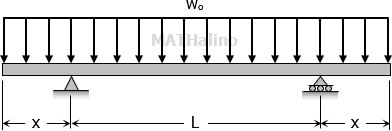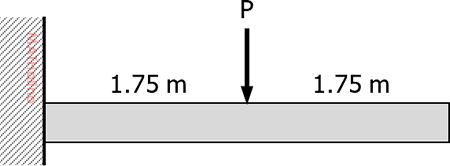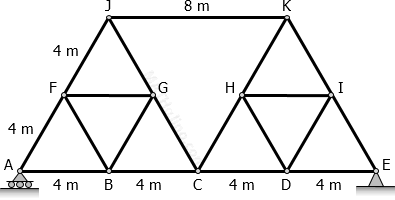Simple Beam With Overhang Under Uniform Load
Situation
The total length of the beam shown below is 10 m and the uniform load $w_o$ is equal to 15 kN/m.
1. What is the moment at midspan if x = 2 m?
| A. 37.5 kN·m | C. -187.5 kN·m |
| B. -37.5 kN·m | D. 187.5 kN·m |
2. Find the length of overhang x, so that the moment at midspan is zero.
| A. 2.5 m | C. 2.4 m |
| B. 2.6 m | D. 2.7 m |
3. Find the span L so that the maximum moment in the beam is the least possible value.
| A. 5.90 m | C. 5.92 m |
| B. 5.88 m | D. 5.86 m |
- Read more about Simple Beam With Overhang Under Uniform Load
- Log in to post comments





